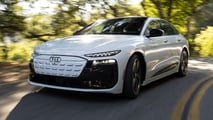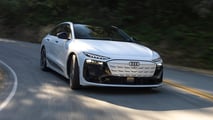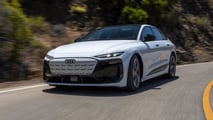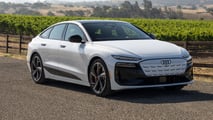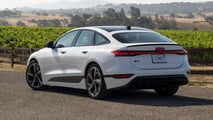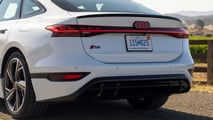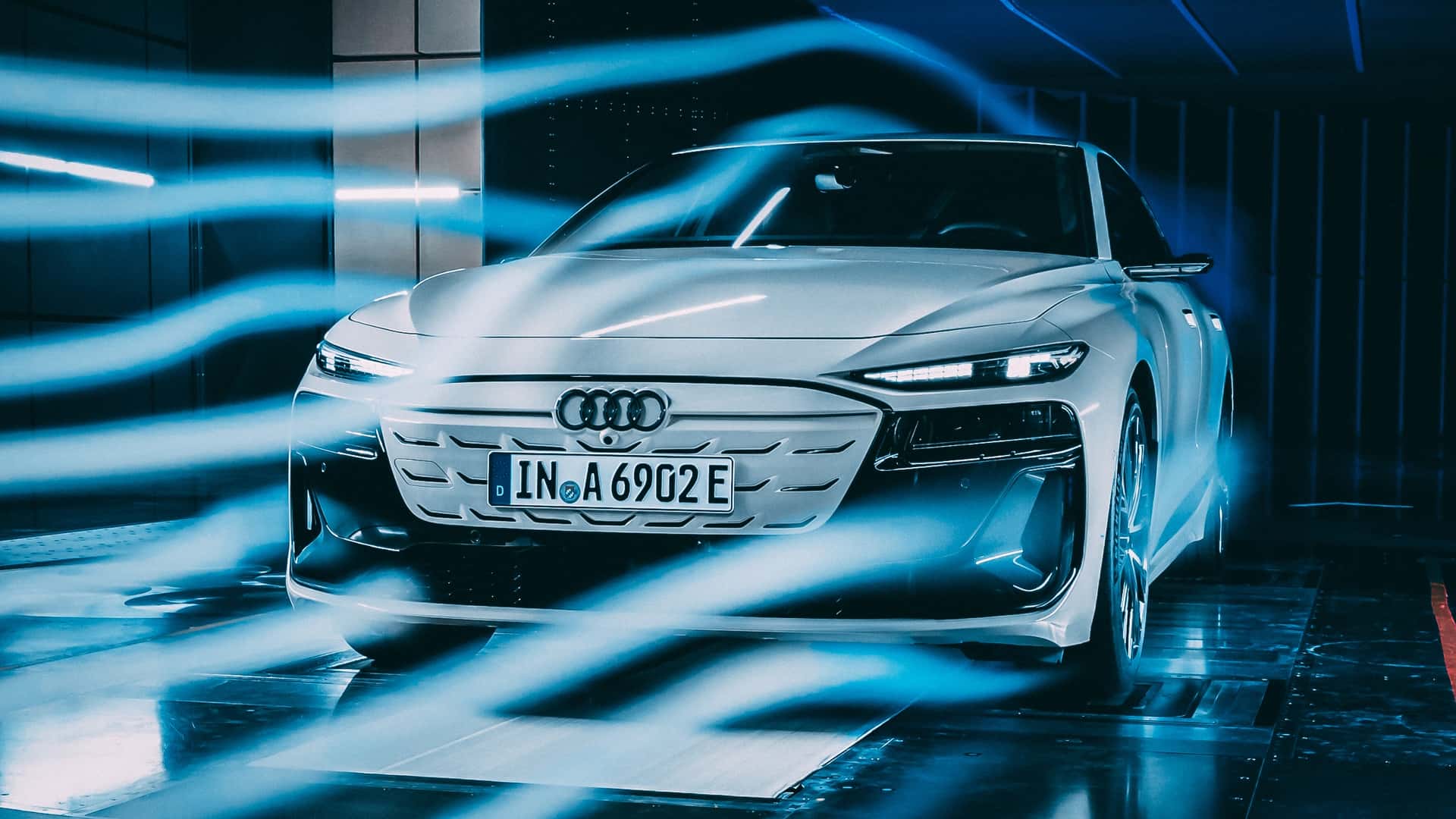
The Audi A6 E-Tron Sportback has emerged as one of the better range-to-price deals on the market right now. For just $67,195, you can get a rear-wheel-drive, 375-horsepower sedan that goes 392 miles on a charge. The only sedans that best it are the Tesla Model S and the Lucid Air, both of which are more expensive.
Pulling off such an impressive range figure is no simple feat. Among weight, rolling resistance, and aerodynamic drag, it’s the air that demands the most load from a car’s powertrain at speed. The less drag a car generates, the less energy it needs to burn to go down the road. The result of better aero for an EV is, of course, more range.

Designers managed to get the A6 E-Tron’s coefficient of drag—a number that represents how much an object resists movement through air—down to just 0.21 Cd. That makes it the most aerodynamically efficient production car from any Volkswagen Group brand, ever. For some context, the Bugatti Veyron, another VW Group product that once held the title of fastest production car on the planet, has a Cd of 0.36.
Obviously, the A6 E-Tron is no supercar. On first glance, it looks like any other modern sedan, with a flat-faced nose and a tall frontal area. So how did Audi manage to generate hypercar-beating aero numbers from such a relatively pedestrian shape? Lots of clever engineering know-how.
"Aside from doing all of the shape modeling with our designers, we had to look at a lot of the details," Dr. Moni Islam, head of development for aerodynamics, says on a video call to journalists in Santa Barbara from Audi’s wind tunnel in Ingolstadt, Germany.
Islam says the front of the A6 was the most important place for finding efficiencies—makes sense, considering it’s where the air first meets the car. But it’s not just the nose where improvements can be made. It’s on the leading edge of either side of the bumper, where the air is directed over the wheels.
"We worked with a lot of detailed optimization on [the] air curtains in order to get the flow just right coming off the side of the vehicle... a lot of optimization has been done both on the rims and on the tires."
Audi optimized every wheel and tire combination for utmost aerodynamic efficiency, says Islam. Wherever the air meets the outside of the car, Audi’s engineers have accounted for that flow.

'Aside from doing all of the shape modeling with our designers, we had to look at a lot of the details.'
Even as an EV, the A6 E-Tron can’t have all of the air pass above or around it. It needs to take some air head-on for the cooling equipment necessary to keep motor and battery temperatures in check. That’s been optimized, too.
"We have a very compact thermal management system, which is essential for the vehicle," says Islam. "But we managed to have a completely ducted inflow and outflow. We combined that with active inlet shutters, which steer the mass flow rate of the oncoming air in just the way that the thermal management system needs it."
"So when the car is driving on the highway, the shutters are usually closed, and that creates a really low drag coefficient."
If the nose is the most important part of a car’s aero, the underbody is the second most important. There’s a reason analysts always talk about floor design in Formula 1—it’s the main source of downforce for the cars. Here, it’s just as essential.
"It goes without saying, of course, we did a huge amount of optimization on the underbody," says Islam. "Because the underbody is so flat and closed, we were able to do lots and lots of optimization there. It’s something which you can’t see in everyday use, but it was really a fundamental part of the optimization work we did."

The ability to adjust the A6’s ride height unlocked even more possibilities. The optional air suspension allows the engineers "to, at high speeds, reduce the ride height of the vehicle—the lower ride height gives us a lower drag coefficient," says Islam.
Finding all of these efficiencies wouldn’t have been possible without modern simulation tech.
"We weren’t just working here in the wind tunnel," said Islam. "We did around 3,500 simulations when we were doing the development of the A6 and all of its variants. That, on top of the approximately 1,000 hours we spent here in the wind tunnel."
Sadly, buyers in America will get a compromised version of the A6 E-Tron, due simply to outdated regulations. The car’s Cd of 0.21 is only achievable when equipped with Audi’s optional “virtual mirrors,” which replace the side-view mirrors with thinner, more efficient cameras, paired with display screens embedded into either front door. Without the cameras, the A6 E-Tron only reaches a Cd of 0.23. Islam says the mirrors are worth about 4 miles of range.
Mirrors or not, the A6 E-Tron’s figures are impressive, and proof of what’s achievable when design and engineering join forces to extract the very most from a vehicle. It’s also evidence that no matter how hard internal combustion tries to stick around, eventually, electric vehicles will take over, at least in the normie commuter car segment.
With EV incentives collapsing in the US, it might take a bit longer for the electric revolution to truly take hold. But as more vehicles like the A6 emerge, offering stellar range for reasonable money, buyers will be more keen to make the switch.
Gallery: Audi A6 E-Tron Sportback

